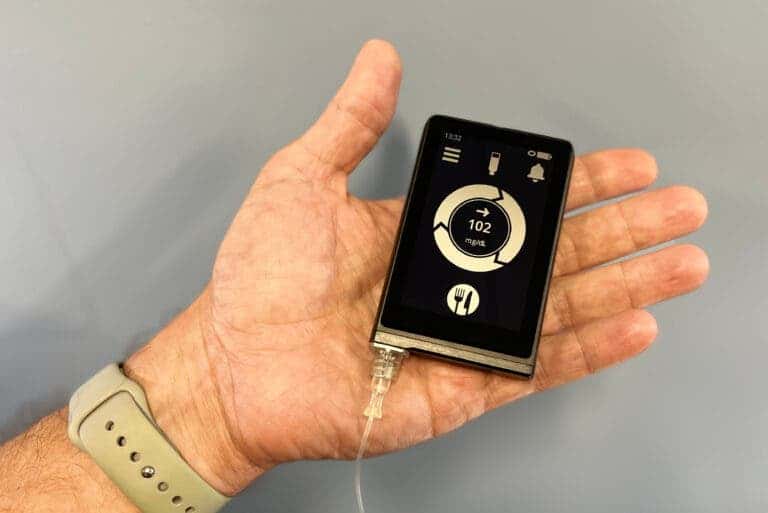
Researchers at the Harvard Medical School just announced exciting results for the clinical trial of a bionic pancreas that delivers insulin to people with type 1 diabetes without the patients having to do anything. The device proved at least just as, and in some cases more, effective at managing blood sugar than conventional treatments like pumps and injections. Because the artificial pancreas automatically delivers custom-made doses of insulin based on the patient’s medical history and diet, this system solves one of the biggest challenges faced by individuals with diabetes, which often do not comply to the letter with their insulin delivery schedules and regimens, worsening their condition in the process.
The challenges of living with diabetes
Insulin is released by your pancreas to lower blood sugar and keep it in the normal range. It achieves this goal by inhibiting the breakdown of fat cells into free fatty acids, a process known as lipolysis. In people with insulin resistance, glucose is not removed properly from the blood because the liver, fat, and muscles don’t respond well to insulin signaling. Furthermore, lipolysis occurs in excess, leading to increases in fatty acid levels, which prompt the liver to produce more glucose, compounding the already high blood sugar levels. This positive feedback loop can exacerbate insulin resistance and eventually lead to the pancreas no longer being able to synthesize insulin, which characterizes diabetes.
In type 1 diabetes, the pancreas — the small gland behind the stomach — progressively reduces the amount of insulin it produces until it stops producing any at all. If the amount of glucose in the blood is too high, it can, over time, seriously damage the body’s organs.
Before insulin was discovered in the 1920s at the University of Toronto, patients with type 1 diabetes rarely lived for more than a year or two. But after the hormone was successfully isolated it quickly saved lives, going on to become one of the most important medical breakthroughs of the 20th century. Today, millions of people across the world are diagnosed with type 1 or type 2 diabetes and benefit from insulin treatments.
But although insulin saves many lives, it is not easily embraced by patients. Some patients experience ‘insulin distress’, an emotional negative response to the use of insulin, while others have injection phobia. According to one study, only 61% of diabetes patients adhere to their insulin treatments, which is a significant health concern that could and usually does lead to diabetes complications.
Automatic insulin delivery

An artificial pancreas is meant to solve many of the issues that cause insulin non-adherence. The credit card-sized device developed at the Harvard Medical School, known as the iLet, monitors the patient’s blood sugar levels 24/7 and automatically delivers insulin in optimal doses when required. The device has to be worn at all times and is usually placed on the abdomen. The pocket-sized wearable device is made by Beta Bionics Inc., which recently received a Breakthrough Device designation from the U.S. Food and Drug Administration (FDA).
The device delivers a custom-made regimen tailored to each individual patient’s characteristics, including weight, sex, and medical history. Perhaps the most important innovation is its automatic insulin delivery using an AI that constantly learns what the optimal amount of insulin that a patient needs is based on their weight and the last meal they ate. Rather than having patients manually input the number of carbohydrates they consumed for each meal, the user of the artificial pancreas needs only to specify whether they just had breakfast, lunch, or dinner in an app that interfaces with iLet.
Since patients don’t have to calculate their carbs and calories, this feature is expected to dramatically improve adherence rates. You just have to wear the device and input whether the next meal has less, the same, or more carbs than usual, and the system should take care of the rest. When blood sugar levels are high, the system pumps out insulin and when blood sugar levels are good no insulin is delivered. It’s a pretty nifty way to avoid all the harmful dips and surges in blood sugar that diabetes patients typically experience from time to time.
In a new study, researchers have reported the findings of a clinical trial involving 219 patients with type 1 diabetes who wore the bionic pancreas for 13 weeks. The participants had previously used insulin shots for at least a year. Researchers compared their blood sugar levels to those of 107 type 1 diabetes patients who underwent treatment with conventional delivery methods, such as injection and insulin pumps, during the same 13 weeks.
The patients that used iLet saw their blood sugar levels drop from 7.9% to 7.3%, while the control group’s blood sugar hovered at around 7.7%. This demonstrates that the device is effective and safe, with the added benefit that it could potentially significantly improve patient adherence — which is something that needs to be demonstrated by subsequent research. For such patients, not having to think about their condition all the time, all waking hours of the day could offer a huge bump in quality of life. Even something as simple as turning off overnight alarms could make some patients cheer.
“There are plenty of people who are struggling right now because they don’t have the right tools, and I think the iLet could help a lot of them have much better glucose control,” Steven Russell, an associate professor of medicine at Harvard Medical School, who led the study, told MIT Technology Review.
“This will reduce their risk of diabetes complications in the long run, and is also going to make their life easier.”
In the future, iLet and other artificial pancreases like it could be upgraded even further. Researchers would like to see a completely autonomous system that delivers optimal doses of insulin with absolutely no input required from the user.
The findings appeared in the New England Journal of Medicine.






